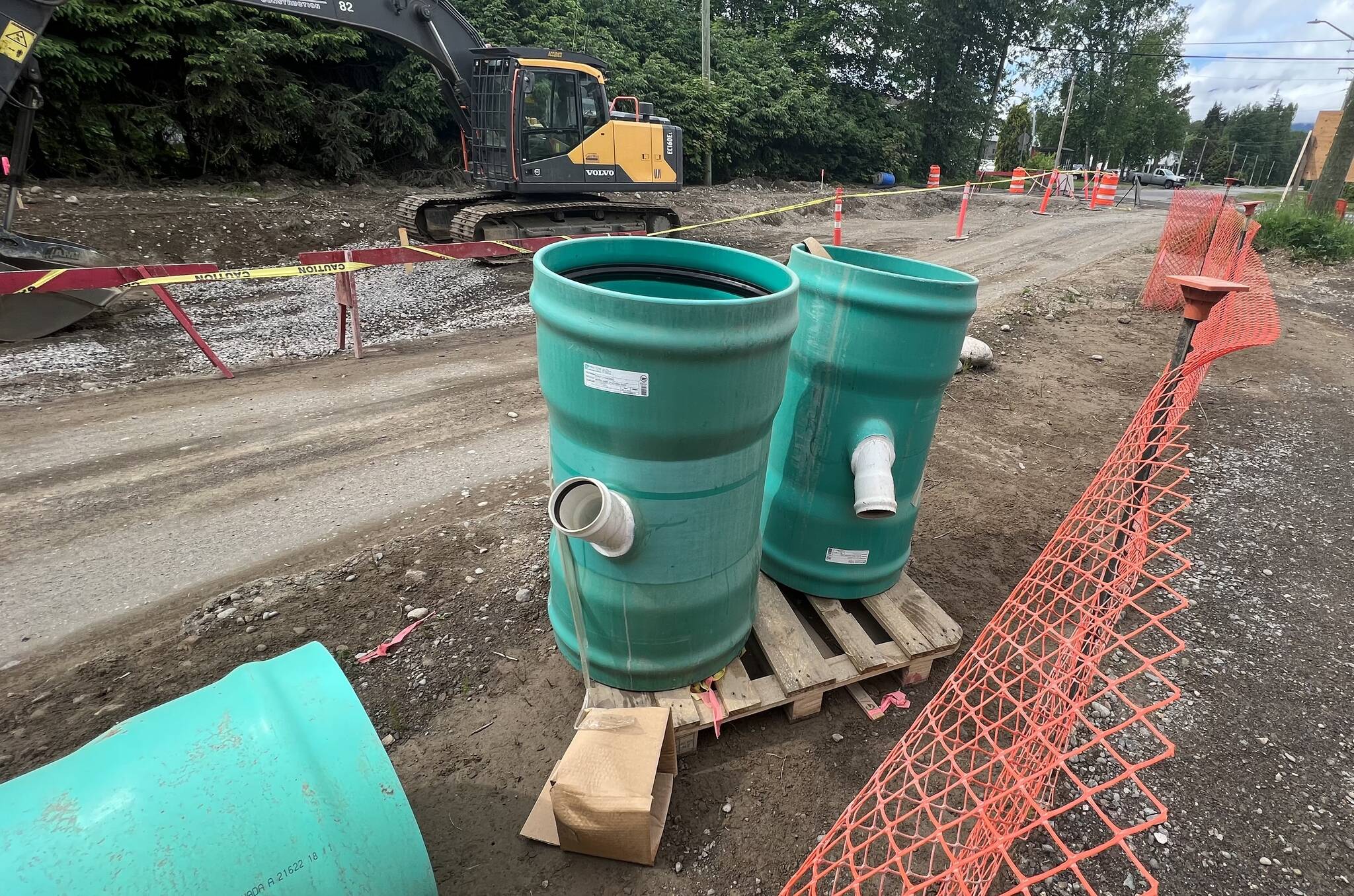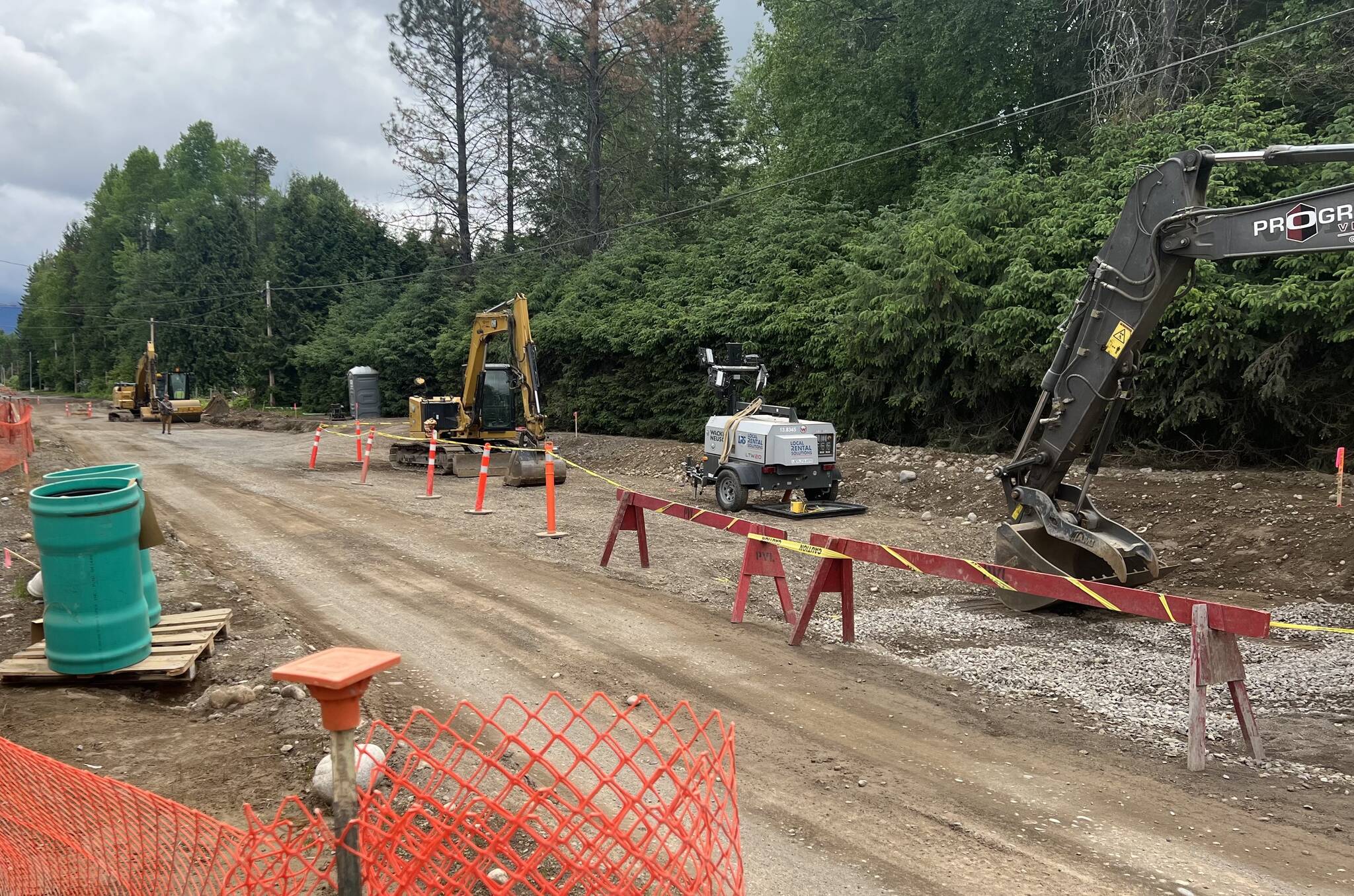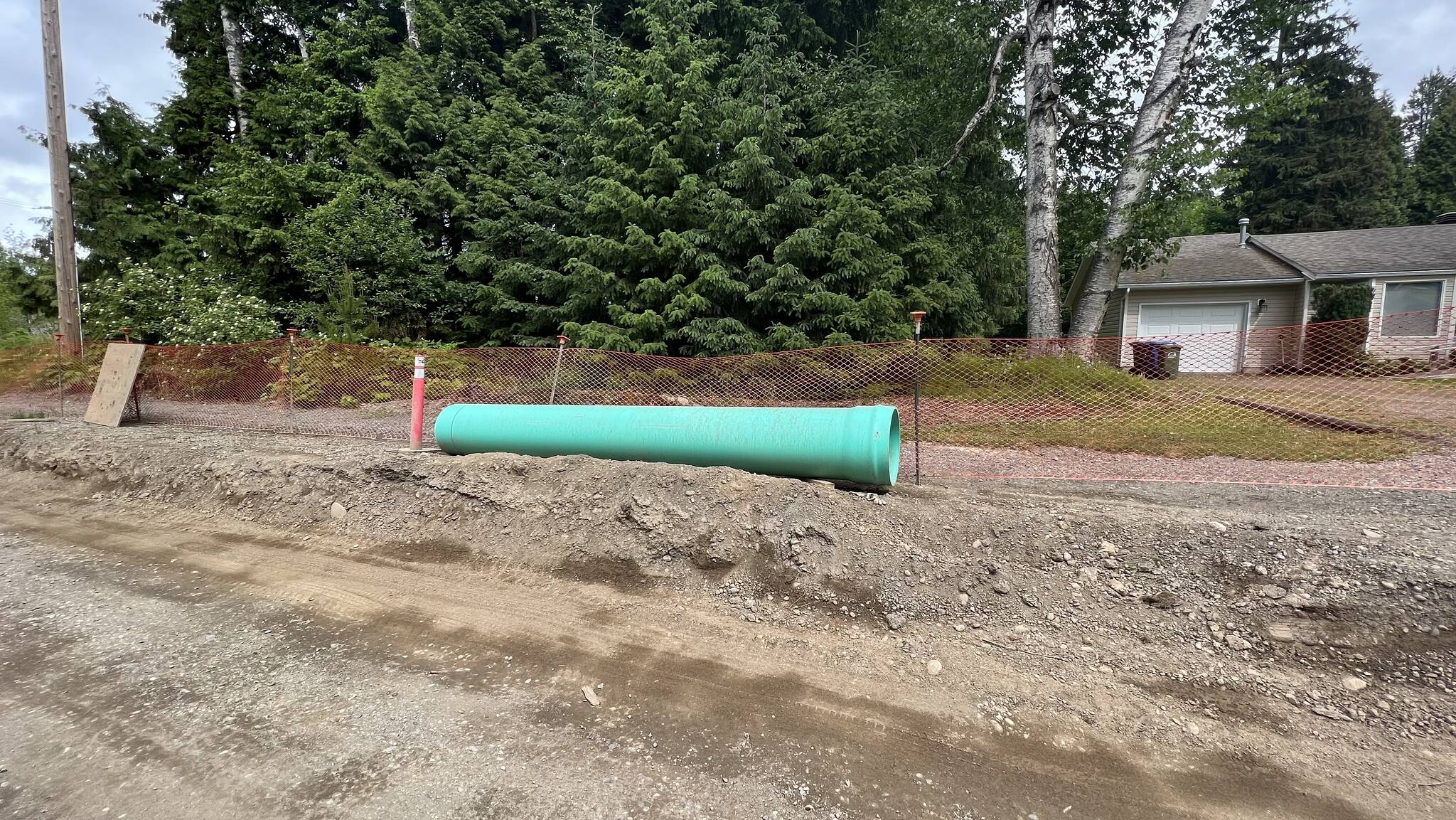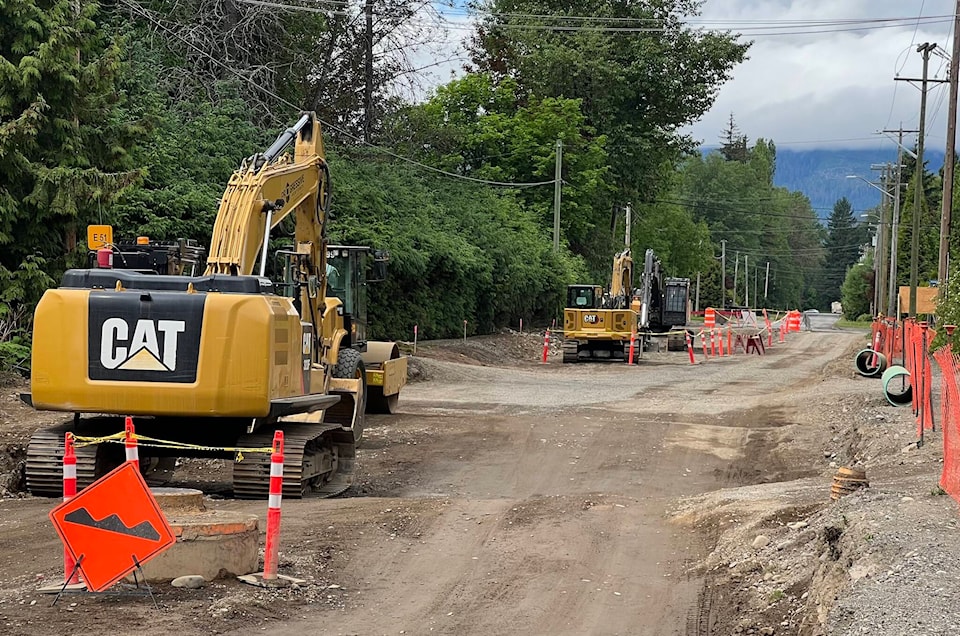Half of Terrace’s drinking water runs through pipes made of a combination of asbestos and cement installed years ago and now ending their useful life, the Terrace Standard has learned.
Asbestos fibres add strength to the cement, making the pipes popular and their use wide-spread during the 1940s and 1950s.
While the science on inhaling asbestos fibres is settled, the science on ingesting or drinking water with asbestos is still contested. There is a growing body of research that suggests ingesting fibres as pipes decay could elevate the risk of stomach and other gastrointestinal-related cancers.
In a 2017 study on ingested asbestos fibres, Italian bio-medical researcher Agostino Di Ciaula noted that some evidence suggests ingested asbestos fibres “seem able to act as a co-carcinogen agent,” adding that there were “toxic effects on the stomach,” among other areas of the body.
In a statement to the Terrace Standard, Health Canada spokesperson Mark Johnson said “there is no conclusive evidence that ingested asbestos is hazardous.”
Johnson said that, while the government agency last developed a guideline technical document for asbestos in drinking water in 1989, it will begin a reassessment later this year, touching upon exposure data and any available studies on the impacts of ingested asbestos in human health, and update its guidelines, if necessary.
Compared to the U.S., Canada’s federal policy falls behind in regulating asbestos fibres in drinking water.
In 1992, the U.S. Environmental Protection Agency (EPA) enacted regulations requiring public drinking water systems be at or below a maximum level of asbestos contamination. The EPA’s U.S. Safe Drinking Water Act limits asbestos to seven million fibres per litre, with the EPA’s National Primary Drinking Water Regulations stating that higher concentrations consumed over extended periods caused an “increased risk of developing benign intestinal polyps (growths).” The fibres can contaminate drinking water through “decay of asbestos cement in water mains.”
In March of this year, a CTV W5 investigation found that approximately 90 per cent of the 100 towns, districts and municipalities it surveyed across Canada still used asbestos cement pipes. In its investigation, which focused heavily on the City of Regina, it ran water tests in a location near a water main break, revealing 370,000 asbestos fibres per litre.
Health Canada’s Guidelines for Canadian Drinking Water Quality (GCDWQ) report says a guideline value for asbestos in drinking water, similar to what the U.S. has imposed, isn’t necessary since there’s “no evidence of adverse health effects through exposure through drinking water.”
Different sections of the guidelines have been published and updated over the last four decades, starting in 1979 with chlorine. Its most recent update, in 2019, was for chemical elements like copper, lead and manganese.
Asbestos was first listed in the document in 1989 and reaffirmed in 2005. The guidelines list “decay of asbestos-cement pipes” as a common source of asbestos in water.
READ MORE: 10% of Kitimat’s water pipes are asbestos-concrete
The sources Health Canada uses in its drinking water guidelines on asbestos are old. Out of the 27 sources it cites, all were published before 1989 — and one was published in the 1960s.
Johnson said “Health Canada assessed new scientific data on asbestos in 2009, 2013 and 2018, including studies evaluated by the Texas State Department of Health and U.S. EPA.”
“Our recent review of the hazard and exposure data related to ingestion of asbestos in drinking water still supports the conclusion from the 1989 technical document that there is little evidence suggesting a causal relationship between asbestos ingestion and cancer,” Johnson said.
When asked about divergent guidelines reached by Health Canada and the EPA, Johnson said “Health Canada’s position on the risk of ingested asbestos is consistent with that of other organizations, including the World Health Organization (WHO) and the Australian National Health and Medical Research Council. Therefore, it has not been felt that there is a need to establish a maximum acceptable concentration (MAC) for asbestos in drinking water.”
Governments outside of Canada have opted for more proactive approaches.
In 2021, the European Union announced it was seeking a comprehensive plan from member states to remove asbestos-cement pipes.
Locally, the City of Terrace says its goal is to replace asbestos-concrete pipes each year as part of its ongoing road replacement program.
This year the city is concentrating its efforts on a major reconstruction above and below Graham Ave. on the southside.
When asked for the locations of asbestos water main breaks, City of Terrace Communications Advisor Tyler Clarke said the city could only provide those in the past year because it didn’t start specifying whether the repairs were due to a damaged water main or pipes to individual properties. “Most of our water repairs are fixing broken laterals that run into an individual property,” adding that most lateral pipes are either copper or PVC.
Clarke also noted that last year, the city repaired asbestos water mains on the 4700 block of Scott Ave. in February and at 4400 Sparks St. in June 2022.
He also said that the city prioritizes infrastructure age, condition assessments and noted deficiencies of water mains when selecting what road gets rebuilt or repaired and when.
By Clarke’s figures, it would take years for the city’s asbestos-cement pipes to be replaced.
In a statement to the Terrace Standard, B.C. Municipal Affairs Ministry spokesperson Shawn Larabee said that “local governments are responsible for local government assets in their communities.” Larabee added that the province’s $1-billion Growing Communities Fund, designed to support infrastructure upgrades, could support local governments in their efforts.
Based on the province’s criteria for funding, the public drinking water supply, treatment facilities and water distribution system are eligible for the one-time grant.
Other cities in the province, including Prince George, have allocated at least some of that funding towards replacing and repairing its aging water infrastructure through its reserve fund.
Viktor Elias joined the Terrace Standard in April 2023.
Tips or story ideas? (250) 638-7283 ext. 5411 or viktor.elias@terracestandard.com.
Like the Terrace Standard on Facebook and follow us on Twitter.



